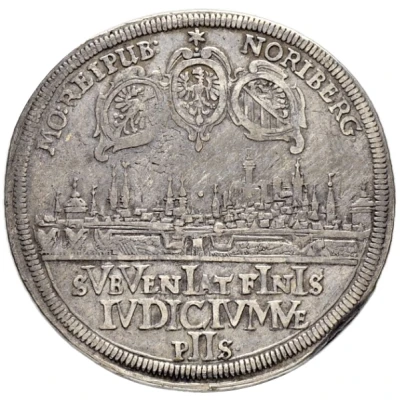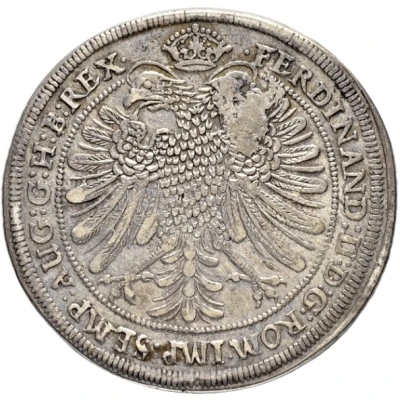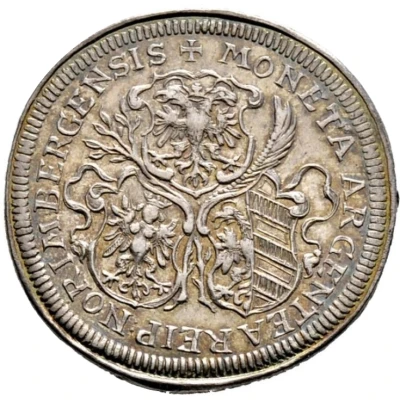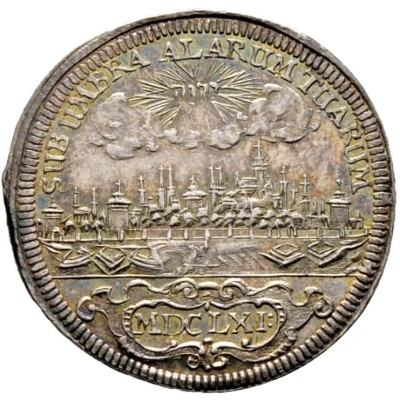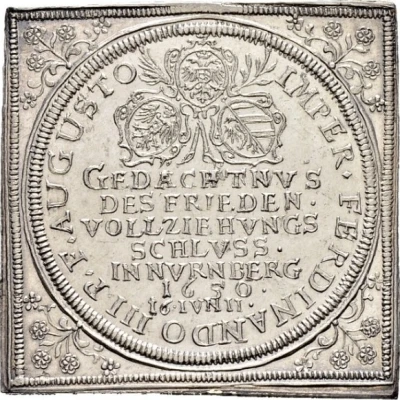
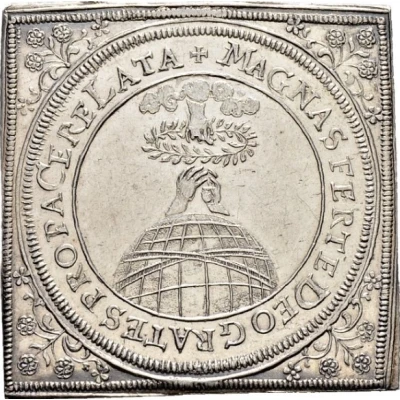

© Sincona AG
½ Thaler Klippe; Peace of Westphalia
1650 year| Silver | 16.02 g | - |
| Issuer | Free imperial city of Nuremberg (German States) |
|---|---|
| Period | Free City (1219-1806) |
| Type | Circulating commemorative coin |
| Year | 1650 |
| Value | ½ Thaler (⅝) |
| Currency | Reichsguldiner (1620-1753) |
| Composition | Silver |
| Weight | 16.02 g |
| Shape | Klippe |
| Technique | Klippe |
| Demonetized | Yes |
| Updated | 2024-10-05 |
| Numista | N#132282 |
|---|---|
| Rarity index | 100% |
Reverse
Hand of God with laurel wreath over two hands coming from a globe.
Script: Latin
Lettering: + MAGNAS FERTE DEO GRATES PRO PACE ERELATA
Engraver: G. Nürnberger
Comment
Dethlefs-Ordelheide 143Interesting fact
The ½ Thaler coin from the Free Imperial City of Nuremberg, minted in 1650 to commemorate the Peace of Westphalia, is an interesting piece of history. One fascinating fact about this coin is that it was minted during a time of great turmoil and change in Europe. The Peace of Westphalia, which was signed in 1648, brought an end to the Thirty Years' War and marked the beginning of a new era of relative peace and stability on the continent. The coin's minting in 1650, just two years after the treaty was signed, highlights the significance of this event and the desire of the people of Nuremberg to commemorate it. Additionally, the coin's design features an image of the Holy Roman Emperor, Ferdinand III, on one side, and the coat of arms of Nuremberg on the other. This highlights the close relationship between the Holy Roman Empire and the Free Imperial City of Nuremberg, as well as the city's pride in its independence and sovereignty. Overall, the ½ Thaler coin from Nuremberg is a unique and interesting piece of history that provides a glimpse into the political and social climate of 17th-century Europe.
